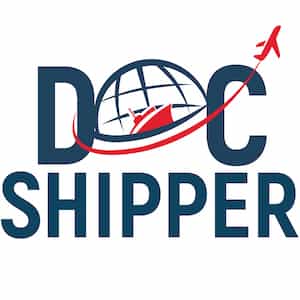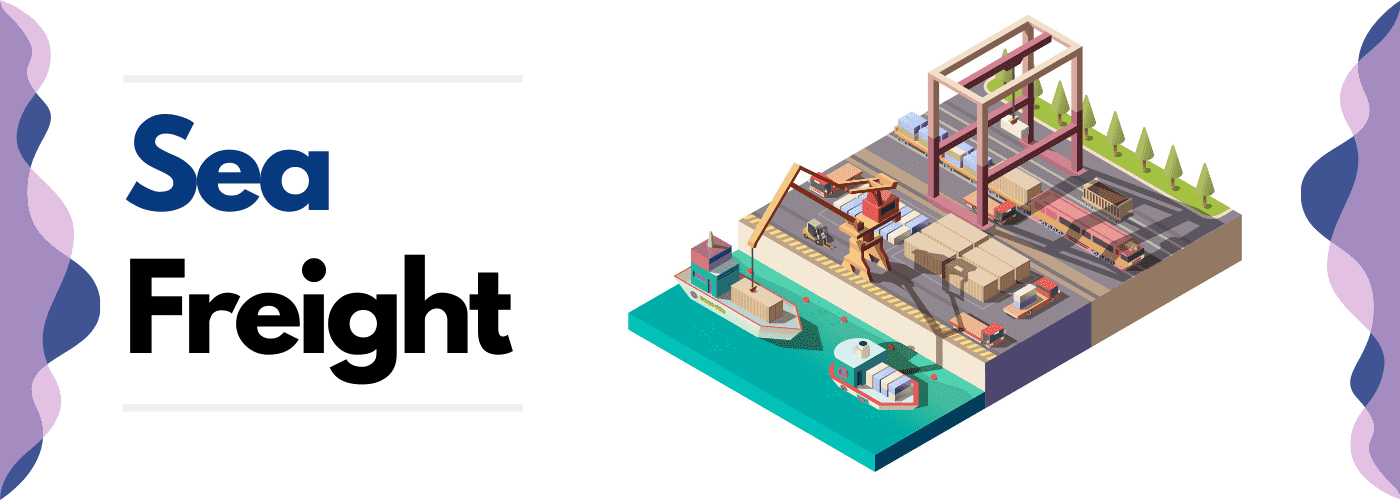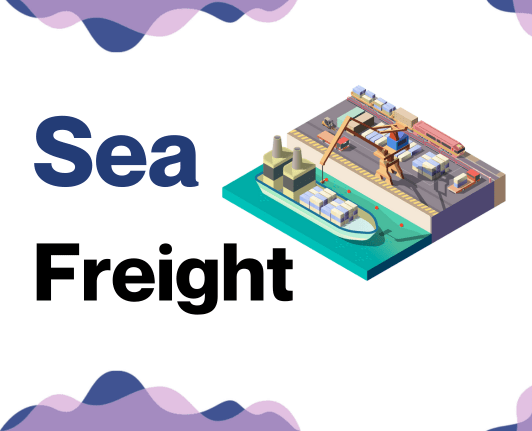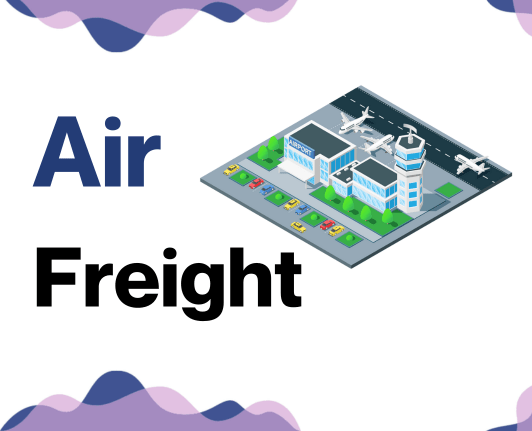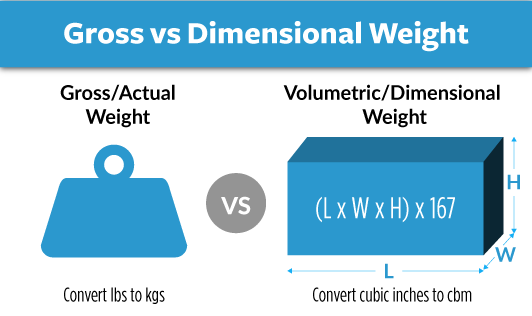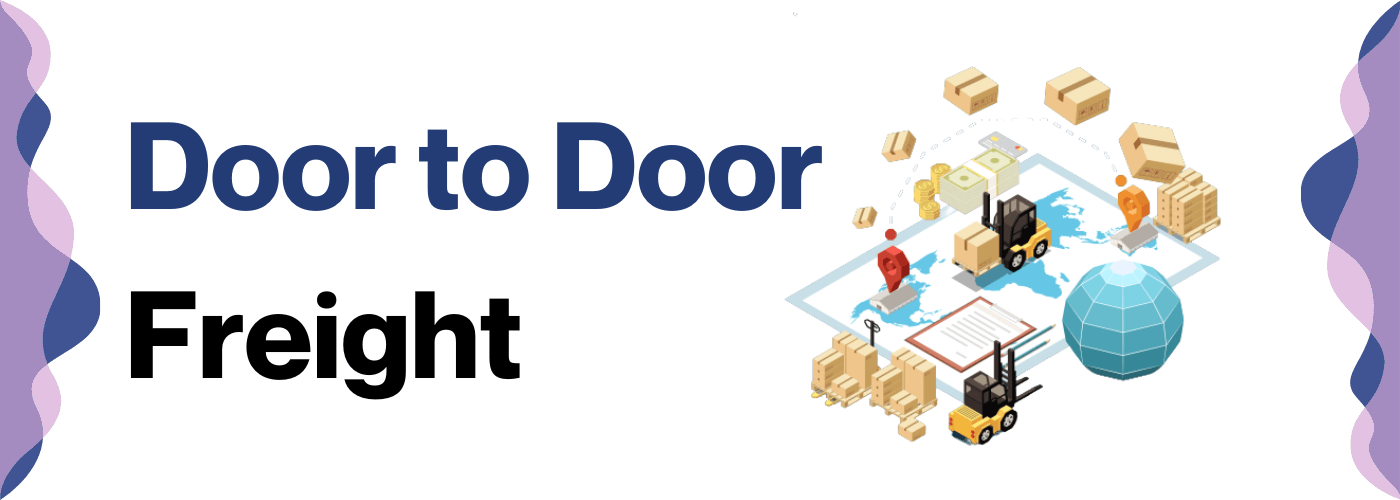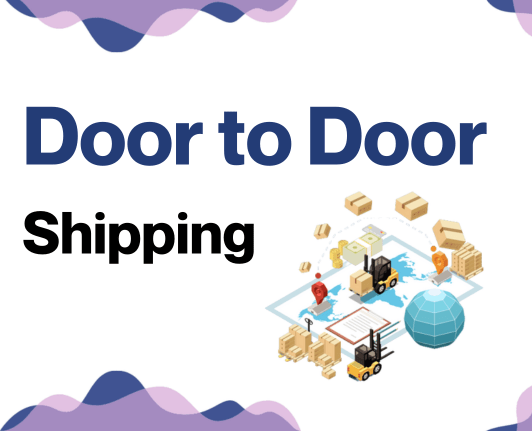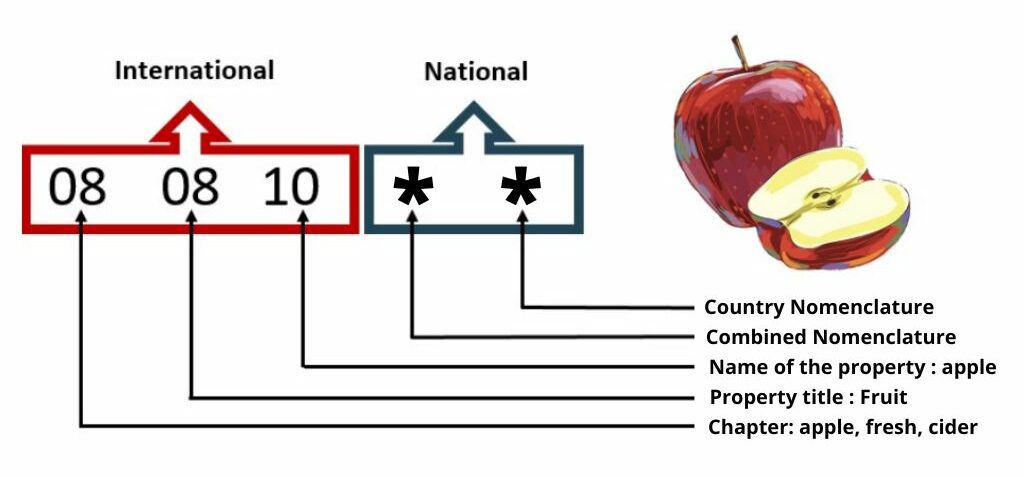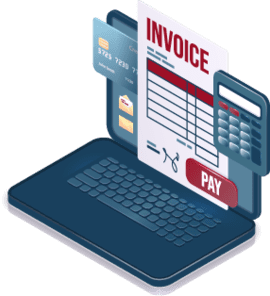Ever tried to juggle between durians and tamburitzas? That's how navigating freight transport between Malaysia and Serbia can feel! Both countries have unique customs regulations and understanding rates, as well as transit times can leave you scratching your head. This guide is here to handhold you through this labyrinth. Expect to dive deep into freight options that tick all your boxes, cruise smoothly through customs clearance, and unravel the enigma of duties and taxes. We've tailored our advice to steer businesses through successful handling of these procedures. If the process still feels overwhelming, let DocShipper handle it for you! Our expertise as an international freight forwarder will seamlessly coordinate every step of your shipping process, turning challenges into success stories.
Table of Contents
Which are the different modes of transportation between Malaysia and Serbia?
Selecting the most efficient transport mode between Malaysia and Serbia isn't a straight path. The vast geographical spread, with mountains, deserts, and seas, may discount road and rail. However, two options emerge victorious - sea and air. Imagine deciding between a race car and a sailboat. The former, just like air freight, zooms you there quickly, while the latter, symbolizing sea freight, delivers more cargo at a slower, relaxed pace. The best choice? It rides on your business goals, budget, and urgency levels. Stay with us; let's unravel this complex decision into digestible pieces.
How can DocShipper help?
Shed the hassles of global shipping! With DocShipper's seamless services, moving goods from Malaysia to Serbia is a breeze. We handle every detail and hurdle, from custom clearances to secure transport. Pursuing a worry-free commercial venture starts here. Get your free estimate in less than 24 hours or dial up our consultants for an enlightening chat. Reach out to us today!
DocShipper Tip: Sea freight might be the best solution for you if:
- You're dealing with hefty quantities or oversized goods. Sea transport is your go-to for maximizing space without stretching your budget.
- Time sensitivity isn't a concern for your shipment. Ocean freight is known for its leisurely pace, especially when compared to the speed of air or rail.
- Your supply chain connects key international harbors. This positions you to take full advantage of a wide-reaching network of ocean trade routes.
Sea freight between Malaysia and Serbia
If your business has a strong connection between the lively ports of Malaysia and the industrious heart of Serbia, you've likely booked at least one container ship. The advantageous trade between these two countries, particularly in products like rubber, palm oil, and electronics from Malaysia, or Serbian furniture, fruits, and machinery, often brings shippers to the sea. Why? Ocean freight offers an affordable solution when dealing in large volumes.
That's the bright side of the coin; on the other lies the shadow of complexity. Name a shipping hurdle, it's probably raised its head during a Malaysia-Serbia sea journey. Unclear about cargo classification codes? Or maybe drowning in administrative paperwork? Stumped by container choices? If you've been nodding along, don't worry. In this part, we will explore proven strategies and specific guidelines to help streamline the daunting process. Hands-on advice sailing your way, set to make ocean shipping between Malaysia and Serbia less choppy. Because nobody should get lost at sea in logistics.
Main shipping ports in Malaysia
Port Klang
Location and Volume: Positioned on the west coast of Peninsular Malaysia, Port Klang is the largest port of the country, handling about 13.2 million TEUs annually.
Key Trading Partners and Strategic Importance: This port is in strategic trade relationships with China, Singapore, Indonesia, and India. It's also crucial as a stop on the maritime Silk Road in China's Belt and Road initiative.
Context for Businesses: If your enterprise is keen on smooth access to ASEAN, Middle Eastern, and Indian markets, Port Klang can be a significant component in your logistics due to its strategic location and substantial capacity.
Penang Port
Location and Volume: Located on the Northwest coast of Peninsular Malaysia, Penang Port handles over 1.5 million TEUs annually.
Key Trading Partners and Strategic Importance: Significant trading partners include China, U.S.A, Singapore, and Japan, providing strategic connections to booming Asian and western markets.
Context for Businesses: If you’re planning to expand in the Northern Region of the Peninsula, including Thailand, Penang Port's exceptional connectivity makes it a dependable factor in your shipping strategy.
Johor Port
Location and Volume: Johor Port, located at the southern tip of the Peninsular, ships nearly 1.3 million TEUs yearly.
Key Trading Partners and Strategic Importance: With strategic trade relationships with Indonesia, China, and Singapore, this port is considered Malaysia's premier southern gateway.
Context for Businesses: Looking to reap the benefits of the Inter-Asia and Intra-Asia trade routes to strengthen footholds in Southeast Asia markets? Johor Port's location makes it a winning choice.
Bintulu Port
Location and Volume: Situated on the island state of Sarawak, Bintulu Port is Borneo's biggest shipping port, moving about 250,000 TEUs each year.
Key Trading Partners and Strategic Importance: With key trade links to China and Australia, it's a vital hub for LNG exports, being the home to Malaysia LNG, the largest LNG production facility in the world.
Context for Businesses: If LNG or petroleum-related goods are your business's core, Bintulu Port, with significant oil and gas facilities, may be an asset to your supply chain.
Kuantan Port
Location and Volume: Placed on the east coast of Peninsular Malaysia, Kuantan Port handles around 26.61 million freight weight tons annually.
Key Trading Partners and Strategic Importance: This port maintains significant trade relations with China, aligning with the ECRL project under China's Belt and Road initiative.
Context for Businesses: If your goal aligns with augmenting the bilateral trade between Malaysia and China, Kuantan Port’s strategic positioning along the Belt and Road initiative puts it high on your list of considerations.
Tanjung Pelepas Port
Location and Volume: Situated at the southwest tip, this port handles a whopping 9.1 million TEUs a year, making it the second-busiest port in the country.
Key Trading Partners and Strategic Importance: A vital link to the U.S.A, China, and Europe, the port is instrumental as a pivotal hub for the east-west trade route.
Context for Businesses: If your strategy is to reach out to prominent American and European markets, the high capacity and strategic connectivity of Tanjung Pelepas Port makes it a compelling choice.
Main shipping ports in Serbia
Port of Belgrade
Location and Volume: Located along the Danube in the capital city of Serbia, the Port of Belgrade serves as a critical transit and trade hub in this landlocked nation. The port has a shipping volume of approximately 1.5 million tons per year, providing services for general, bulk, and containerized cargo.
Key Trading Partners and Strategic Importance: The port plays a vital role in facilitating trade between Serbia and its neighboring countries including Romania, Hungary, and Bulgaria, mainly due to its strategic position on the Pan-European Corridor VII the Danube.
Context for Businesses: If you're looking to penetrate the Eastern Europe market, the Port of Belgrade can be a valuable addition to your logistics strategy due to its ability to provide efficient inland waterway transport. Exposure to many trading partners across Europe and access to a dense network of roads and railways also enhance its relevance.
Port of Novi Sad
Location and Volume: Situated on the Danube River near the city of Novi Sad, this port does not handle a high volume of goods in comparison to the Port of Belgrade but serves as a crucial distribution point for agricultural products with an annual capacity of over 2 million tons.
Key Trading Partners and Strategic Importance: The port is of strategic importance in supporting the agricultural sector of Serbia and neighboring countries. Due to its geographical position, it primarily facilitates trade with European countries via the Danube-Black Sea route.
Context for Businesses: For businesses specializing in agricultural goods and looking to reach markets across Europe more efficiently, the Port of Novi Sad is an ideal choice. Its specialized handling equipment and storage facilities cater specifically to bulk agri goods.
As Serbia is a landlocked country, it primarily depends on these two key international ports, the Port of Belgrade and the Port of Novi Sad, for facilitation of international trade. Your choice between the two depends on the type of cargo you wish to ship and the specific markets you aim to reach.
Should I choose FCL or LCL when shipping between Malaysia and Serbia?
Shipping your goods between Malaysia and Serbia requires strategic decision-making, with your choice of FCL (Full Container Load) or LCL (consolidation) significantly shaping the outcome of your transportation process. This decision dictates cost, delivery timelines, and overall shipping success. Think of it as choosing between splitting ride costs (LCL) and having a private vehicle (FCL). This guide will illuminate the differences between these two sea freight options, aiding you in making an educated selection that fits your specific requirements. Let's dive into the nitty-gritty, shall we?
LCL: Less than Container Load
Definition: LCL (Less than Container Load) shipping allows several shippers to share space in a single container. It's a cost-effective method for shipping smaller volumes of goods.
When to Use: LCL shipment should be your go-to option if your cargo is less than around 14 CBM. This option grants you better flexibility and a more affordable price, especially when you aren't shipping enough goods to fill a whole container.
Example: For instance, if you're exporting artisanal handicrafts from Malaysia to Serbia, and your shipment only occupies about 10 CBM of a container, LCL shipping would be your best choice. This would allow you to only pay for the space your items occupy, rather than the whole container.
Cost Implications: The main advantage of LCL freight is the potential for cost savings. LCL means you only pay for the space your goods use, not an entire container. Bear in mind though, supplementary LCL costs could occur, such as loading/unloading fees at the warehouses. Despite these fees, LCL might still end up cheaper for shipments below the ~14 CBM threshold.
FCL: Full Container Load
Definition: FCL (Full Container Load) shipping is when a single merchant's goods completely occupy an entire container - usually a 20ft or 40ft standard one.
When to Use: If your cargo is more than 13 to 15 cubic meters (CBM), then FCL shipping could be a cost-effective and secure choice. As the container is exclusive to your goods and sealed from the origin to the destination, it can offer enhanced safety, especially for high-value items.
Example: Suppose your business deals in large machinery parts and you need to transport several bulky items from Malaysia to Serbia. Given their size, you're likely to fill up more than 15 CBM, making FCL the preferred option. With FCL, your machinery will be safely locked in the FCL container and untouched until it arrives in Serbia.
Cost Implications: For significant volume shipments, the FCL shipping quote per unit (item) tends to decrease, as the cost is spread over a larger number of goods. Thus, while the initial outlay for booking an entire 20ft or 40ft container could seem high, the total cost per item makes it a favorable option for larger consignments.
Unlock hassle-free shipping
Experience hassle-free cargo shipping with DocShipper. Our seasoned ocean freight experts are committed to assisting you in selecting the optimal shipping option - whether it's consolidation for small loads or full container for heavy consignments. Factors such as budget, quantity and urgency of shipment heavily influence this choice, but don't fret - we're here to simplify it all. Ready to make your Malaysia-Serbia shipping decisions stress-free with our expert consolidation or container-preview? Click here for a free estimation.
How long does sea freight take between Malaysia and Serbia?
Sea freight between Malaysia and Serbia roughly takes around 25 to 50 days. But this is only an average estimation. Transit times can substantially vary based on factors like the specific ports used, the weight, and the nature of the goods being shipped. For a personalized and accurate quote, it's always recommended to reach out to a trusted freight forwarder like DocShipper.
| Malaysian Ports | Serbian Ports | Average Transit Time (Days) |
| Port of Klang | Port of Bar | 33 |
| Port of Tanjung Pelepas | Port of Bar | 41 |
| Johor Port | Port of Bar | 39 |
| Penang Port | Port of Bar | 35 |
*This table provides you the average transit time in days for sea freight between these ports. Considering the geographic and logistic complexities, please consult DocShipper to get the most accurate transit time.
How much does it cost to ship a container between Malaysia and Serbia?
The cost of shipping a container from Malaysia to Serbia can vary widely, often falling anywhere in a broad range. This ambiguity arises from several factors including the point of loading and destination, choice of carrier, nature of goods, and the tide of monthly market fluctuations. However, we caution against viewing these estimates as absolutes - final ocean freight rates are bespoke and finely tuned to your unique shipping needs. Rest assured, our seasoned shipping specialists stay at the helm, keenly devising cost-effective strategies and adjusting to the wave of factors influencing the shipping cost. Your personalized quote waits - don't hesitate to reach out. The seascape of container shipping is complex, but together, we’ll plot a course that suits your exact needs.
Special transportation services
Out of Gauge (OOG) Container
Definition: OOG containers are specialized shipping containers designed for cargo that doesn't fit within standard dimensions due to excess height or width. They include open top containers and flat rack containers that handle oversized or long-length goods.
Suitable for: Used for large items, heavy machinery, industrial equipment, large constructions elements, or any item exceeding standard shipping dimensions.
Examples: Things like construction equipment, industrial boilers, yachts, cranes, and agricultural machinery are often shipped using OOG containers.
Why it might be the best choice for you: When your cargo consistently exceeds the dimension of standard containers and can withstand exposure to weather elements, then OOG containers are the optimum choice as they handle out of gauge cargo proficiently.
Break Bulk
Definition: Break bulk cargo refers to goods that are loaded, shipped, and unloaded individually rather than in a container. Breakbulk shipping is usually used when cargo is too large or heavy for standard containers.
Suitable for: Ideal for large, heavy, long, or high goods that cannot fit in standard containers or flat racks.
Examples: Heavy machinery, construction materials, railroad vehicles, or windmill wings are popular goods shipped as break bulk.
Why it might be the best choice for you: If your cargo is such that it can't be containerized due to their irregular size or shape, break bulk shipping allows you to transport them efficiently without dismantling them.
Dry Bulk
Definition: Dry bulk refers to cargo shipped in large quantities, loaded directly into the vessel’s hold, and not in a container. Typically, these are homogeneous, loose items that are of little to no packaging.
Suitable for: Commodities that are bought and sold in large quantities like grain, coal, iron ore, or sugar.
Examples: Construction materials, rocks, sand, cement, agricultural commodities, etc. are commonly shipped as dry bulk.
Why it might be the best choice for you: When dealing with large commodities, dry bulk shipping offers an economical and efficient solution as it eliminates the need for packing in individual containers.
Roll-on/Roll-off (Ro-Ro)
Definition: In a Ro-Ro vessel, cargo is rolled on and off the ship on its own wheels or using a platform vehicle. The Ro-Ro shipping method is often used for shipping cars, trucks, trailers, and other vehicles.
Suitable for: Vehicles and machinery that can be wheeled onto and off the vessel.
Examples: Cars, construction machinery, trucks, trailers, and agricultural machinery are often transported using Ro-Ro vessels.
Why it might be the best choice for you: Ro-Ro is a simpler, faster and often more cost-effective solution for shipping any kind of wheeled cargo.
Reefer Containers
Definition: Reefer containers are refrigerated shipping containers for goods requiring temperature-controlled conditions during transport, like fresh produce, pharmaceuticals, or certain chemicals.
Suitable for: Perishable goods requiring a constant cool temperature throughout the voyage.
Examples: They are perfect for shipping fruits, vegetables, fish, meat products, dairy products, and pharmaceuticals.
Why it might be the best choice for you: If your freight includes temperature-sensitive items, reefer containers ensure your cargo arrives in the same condition as when it was loaded, preserving quality and increasing the market lifecycle of your products.
Now that you understand the different sea freight shipping options, you are better equipped to choose the one that best fits your business needs. Contact DocShipper for a free shipping quote within 24 hours, customized to your business's unique shipping requirements.
DocShipper Tip: Air freight might be the best solution for you if:
- You're pressed for time or facing a non-negotiable deadline. Air freight delivers unparalleled speed when it comes to transit times.
- Your shipment is modest in size, falling under 2 CBM. Air freight is particularly well-suited for these smaller consignments.
- Your supply chain includes destinations that are off the beaten maritime or rail paths. Air freight gives you access to a comprehensive global airport network.
Air freight between Malaysia and Serbia
When you're dealing in small, high-value goods - maybe electronics or premium fashion items, air freight from Malaysia to Serbia carries the torch for speed and reliability. Imagine the clock-ticking rush of a last-minute soccer goal! That's the pace of air freight's game-play. But remember, it’s not just the weight of your goods that matters. It's space too! Like trying to fit a large couch into a compact elevator, you'll pay for that space it occupies. Many shippers misstep here, miscalculating costs with cumbersome goods and taste the sour sting of higher charges. We’ll delve into these pitfalls and how to dodge them expeditiously, saving you headaches and potentially sizable expenses.
Air Cargo vs Express Air Freight: How should I ship?
If getting your items from Malaysia to Serbia in super-quick time is your business's mantra, Express Air Freight could be your best buddy, using a dedicated plane to whisk your goods across continents. However, if you're all about blending speed with cost-effectiveness, then Air Cargo - embracing the shared space of regular airlines - might be your champion. We're diving deep into the pros and cons of both, helping you streamline your shipping strategy. Intrigued? Let's hop right in!
Should I choose Air Cargo between Malaysia and Serbia?
Air cargo between Malaysia and Serbia can be an effective strategy for your business. With Malaysia Airlines and Air Serbia, you gain access to prominent international cargo carriers recognized for their cost-effectiveness and reliability. Though transit times may be longer due to scheduled flights, the benefits outweigh this minor drawback, especially for shipments exceeding 100/150 kg (220/330 lbs). By choosing air freight, you can align your shipping needs with your budget, resulting in a more efficient logistics strategy. Are you ready to embrace the air cargo path?
Should I choose Express Air Freight between Malaysia and Serbia?
Express air freight, a service leveraging cargo-only aircrafts, could be your solution for small, urgent consignment between Malaysia and Serbia. Ideal for packages under 1 CBM or approximately 100/150 kg (220/330 lbs), this method offers priority handling and faster delivery times. Trusted international couriers such as FedEx, UPS, and DHL specialize in this quick, reliable shipping system. If your shipment needs a swift, smooth transit, choosing express air freight might indeed prove advantageous.
Main international airports in Malaysia
Kuala Lumpur International Airport
Cargo Volume: With a volume of nearly 726,230 metric tonnes annually, this airport is Malaysia's busiest in terms of cargo traffic.
Key Trading Partners: Majorly caters to the Asiatic region, including China, India, Indonesia, Japan and Taiwan, with additional trade routes to Europe and North America.
Strategic Importance: Acts as a central hub connecting Asia with the rest of the world, and is vital for the economic growth of Malaysia.
Notable Features: Equipped with state-of-the-art logistics capabilities, advanced cargo storage facilities, and efficient customs handling.
For Your Business: If your business requires frequent and large volume shipping to Asia or worldwide, leveraging KLIA's extensive network can optimize your logistics operations.
Penang International Airport
Cargo Volume: Handles more than 150,000 metric tonnes of cargo each year, making it the second busiest airport in Malaysia.
Key Trading Partners: Serves several international trade routes including Europe, Middle East, Australia, and key Asian countries such as China, Japan, and India.
Strategic Importance: Located in Malaysia's Silicon Valley, making it a crucial player in the transshipment of tech and electronics.
Notable Features: Known for being well-connected and modern, with a dedicated Cargo Complex for smooth operations.
For Your Business: If your business deals in electronics or tech-based goods, Penang is a versatile node in your supply chain due to its proximity to major manufacturing hubs.
Sultan Abdul Aziz Shah Airport
Cargo Volume: Annually manages around 100,000 metric tons of cargo.
Key Trading Partners: Has active trade connections primarily with Asian countries and some parts of the Middle East and Europe.
Strategic Importance: It is an important secondary airport that serves the Kuala Lumpur region and handles the overflow from Kuala Lumpur International Airport.
Notable Features: Comprises Free Commercial Zone providing tax and duty exemptions, along with specialized aero-manufacturing services.
For Your Business: Especially suitable if you are looking for an option that combines cargo transport with warehousing benefits in a busy trading zone.
Sultan Ismail Petra Airport
Cargo Volume: Handles lesser cargo volume, but showcases consistent growth year-on-year.
Key Trading Partners: Mainly caters to nearby Asian countries including Indonesia, Thailand, and China, with domestic flights linking to Kuala Lumpur.
Strategic Importance: Important regional airport with effective cargo handling for its size.
Notable Features: Presents excellent domestic links and modern facilities despite its smaller stature.
For Your Business: A good option if your business seeks to tap into niche markets in East Malaysia and nearby Asian countries without congestions typically found in larger airports.
Lapangan Terbang Antarabangsa Kuching
Cargo Volume: While its cargo handling remains modest, it showcases a steady growth potential.
Key Trading Partners: Primarily connects with key Asian trading partners such as China, Indonesia, and Singapore, plus domestic routes.
Strategic Importance: Acts as an essential hub for East Malaysia.
Notable Features: Has Integrated Cargo Centre catering to both international and domestic cargo.
For Your Business: Ideal for businesses shipping smaller volumes and looking to build a foothold in Eastern Malaysia or nearby regions.
Main international airports in Serbia
Belgrade Nikola Tesla Airport
Cargo Volume: Over 22,000 tonnes in 2020
Key Trading Partners: Germany, Russia, Turkey, China, and Italy
Strategic Importance: This airport serves as the country's main hub, offering connections to many international destinations. It is located in the capital city, making distribution within Serbia quicker and easier.
Notable Features: The airport has an air cargo center covering 6,500 square meters, providing comprehensive logistic and warehousing solutions.
For Your Business: With direct flights to key trading partners, centralized location, and extensive facilities, this airport could be the optimal choice for your Serbian export or import business needs.
Niš Constantine the Great Airport
Cargo Volume: Around 1,000 tonnes in recent years
Key Trading Partners: Austria, Italy, Switzerland, Germany, and Slovenia
Strategic Importance: Being the second biggest airport in Serbia, it provides good connectivity within Europe, making it strategic for European trade.
Notable Features: The airport is located near pan-European corridors X and VII, offering excellent road and railway connectivity.
For Your Business: If your business involves shipping goods to or from European countries, this airport, with its great intra-European connectivity and road-rail linkage, can optimize your transport logistics.
How long does air freight take between Malaysia and Serbia?
Shipping from Malaysia to Serbia by air freight typically takes between 3 to 7 days. However, keep in mind that these times can fluctuate. Factors such as the chosen airports, the weight of your goods, and their nature can significantly impact the overall transit time. To acquire the most accurate and specific times for your shipment, it is highly recommended to consult with a freight forwarder like DocShipper.
How much does it cost to ship a parcel between Malaysia and Serbia with air freight?
Shipping an air freight parcel between Malaysia and Serbia typically falls in the range of $2.5 to $7 per kg. However, a multitude of factors can affect this - including the distance from the airports, dimensions and weight of your parcel, and the nature of your goods. At our company, we understand that every shipment is unique, so we tailor our quotes accordingly to deliver you the best rates. Let us ease your shipping worries. Contact us and receive a personalized, no-obligation quote in less than 24 hours.
What is the difference between volumetric and gross weight?
When shipping air freight, 'Gross Weight' is the actual physical weight of your shipment, measured in kilograms (kg). 'Volumetric Weight', on the other hand, is a calculation based on the space your shipment occupies on the aircraft, also in kg.
To calculate the gross weight in Air cargo, you simply weigh the shipment. Let's say you have a box that weighs 30 kg. This equals approximately 66 lbs.
Volumetric weight, however, requires an extra step for calculation. In Air cargo, you obtain it by multiplying the length, width, and height of your shipment (in centimeters), and dividing the result by 6000. For Express Air Freight services, the divisor is 5000. So, if your shipment measures 60cm x 50cm x 40cm, the calculation is (60x50x40) / 6000 for Air cargo (20kg, or about 44 lbs) and (60x50x40) / 5000 for Express Air Freight (24kg, or around 53 lbs).
These calculations matter because freight charges hinge on them. Your charge is based on either gross weight or volumetric weight—whichever is higher. Thus, knowing these calculations can help you anticipate shipping costs and plan more efficiently.
DocShipper tip: Door to Door might be the best solution for you if:
- You value convenience and want a seamless shipping process, as door-to-door takes care of every step from pickup to delivery.
- You prefer a single point of contact, as door-to-door services typically provide a dedicated agent to handle all aspects of the shipment.
- You want to minimize the handling of your goods, reducing the risk of damage or loss, as door-to-door minimizes transitions between different modes of transport.
Door to door between Malaysia and Serbia
Navigating the shipping world? Go for door-to-door service from Malaysia to Serbia! This all-inclusive alternative takes your cargo from origin to destination completely, easing your logistics journey. It's efficient, saves you time and often reduces risks. Sounds good, right? Buckle up, let's dive into the fine details!
Overview – Door to Door
Problem-free logistics are at your fingertips with door-to-door shipping between Malaysia and Serbia. This sought-after service delivers a seamless logistics solution eliminating the daunting complexities of international shipping. It's a relief for clients like you, offering advantages like streamlined customs procedures, timely delivery, and minimized risk of damage. Though costs can be higher, the convenience it provides is often well worth it. Trust door-to-door shipping to ease your load and put your mind at ease.
Why should I use a Door to Door service between Malaysia and Serbia?
So, you're shipping goods from Malaysia all the way to Serbia, eh? No small task, that's for sure! There's no magic carpet for this Aladdin, but fortunately, there is the Door to Door service. Here are five reasons why this could be your new ship-mate (pun absolutely intended).
1. All-Inclusive: Door to Door service isn't just a fancy name—it means your goods are picked up from your door and delivered straight to the destination's door. No detours, no hassles. You can chill while your cargo makes its journey.
2. Timely: If you've got goods hotter than a plate of mom’s homemade Serbian sarma that need to be in Belgrade by Friday, Door to Door service ensures rapid dispatch and delivery. It's like having your very own logistics Flash!
3. Tailored: Have a complex shipment, like a giant durian sculpture or an oddly shaped Batu cave replica? No problem! Door to Door service specializes in handling irregular cargo, with the utmost care and professionalism.
4. Trucking until Destination: You can kick back and let us do the heavy lifting. Literally. Door to Door service includes trucking from pick-up to the final destination. It’s smooth sailing—or, in this case, shipping.
5. Stress-free: No more customs paperwork nightmares—(we’ve all been there). Using a Door to Door service means you're freed from the daunting maze of documentation, duties, and customs clearance. In other words, less stress, less mess.
To sum it up, Door to Door service takes the weight off your shoulders (and puts it onto ours), while guiding your goods safely, quickly, and seamlessly from Malaysia to Serbia.
DocShipper – Door to Door specialist between Malaysia and Serbia
Streamline your shipping from Malaysia to Serbia with DocShipper. We take care of every detail, from packaging and transport to customs procedures, offering an array of shipping methods. You don't have to lift a finger - leave the complexities to our experts. A dedicated Account Executive is just a call away, ready to assist with your unique shipping needs. Request a free estimate in under 24 hours, or seek guidance from our consultants at no cost. We're efficient, experienced, and eager to help.
Customs clearance in Serbia for goods imported from Malaysia
Customs clearance is the practice of taking goods through customs so they can enter or leave a country. Navigating this process between Malaysia and Serbia can be fraught with complexity. Potential pitfalls, such as unexpected fees or charges, can hinder your business operation. Understanding duties, taxes, quotas, and licenses is essential to prevent your cargo from getting stuck in customs. The stakes are high but worry not; we’ll dig deeper into these subjects. Need extra help? DocShipper can assist the entire process no matter the goods or location. For project budgeting estimates, contact our team with the origin of your goods, the value, and the HS Code. With this information, we'll provide you an accurate estimate of your shipping costs. Dive in to get yourself equipped for smooth shipping operations.
How to calculate duties & taxes when importing from Malaysia to Serbia?
Getting a handle on how to estimate duties and taxes for importing goods from Malaysia to Serbia is vital for your business planning. This calculation requires several vital pieces of information. First and foremost, you will need the country of origin - in this case, Malaysia - where your goods were manufactured or produced. Simply put, this means tracing back to where your goods’ journey began, a fundamental step in assessing your import costs.
Next, you must familiarize yourself with the HS Code, a globally recognized system of names and numbers used to classify traded products. This code will help determine the rate of duty applied to your goods. The Customs Value also plays a crucial role– this is the complete cost of your goods, including the price you paid and all transportation costs up to the Serbian border.
From here, you need to understand the Applicable Tariff Rate, which relies on Serbia’s specific tariff schedule. Last but not least, keep an eye out for other taxes and fees that may apply to your product type, such as VAT, excise, or environment taxes.
When you have successfully gathered all this information, your journey to understanding your importing costs from Malaysia to Serbia is well underway. This initial step, identifying your goods' manufacturing or production country, sets the foundation for a smoother, more predictable import process. With this knowledge in hand, avoid any unexpected fees and keep your business operations ticking smoothly.
Step 1 - Identify the Country of Origin
Knowing the Country of Origin is a critical first step in estimating duties and taxes for imports from Malaysia to Serbia. Here are five key reasons why:
1. Preferential access: Malaysia and Serbia have trade agreements that may lower or eliminate duties.
2. Accurate HS code: Each product has a unique Harmonistic System (HS) code based on its origin. You need this to calculate customs duties.
3. Import restrictions: Some goods are subject to country-specific limitations that can affect your shipments.
4. Acknowledge potential tariffs: Dependent on the origin, products might endure additional tariffs.
5. Avoid penalties: Wrongfully declared origins can trigger fines and delays.
Here, bilateral trade agreements come into play. A good example is the upcoming Comprehensive Economic Cooperation Agreement (CECA) between Malaysia and the Eurasian Economic Union, that Serbia is a part of. It aims to promote free trade and eliminate export duties, giving an added incentive to ship goods from Malaysia to Serbia.
For import restrictions, Serbia mainly targets illegal or harmful products. The list is comprehensive, so it’s worth double-checking your items against the official customs regulations, and consulting with a freight expert like DocShipper to ensure smooth sailing for your shipments. Remember, the more prepared you are, the fewer surprises you'll have to tackle.
Step 2 - Find the HS Code of your product
The Harmonized System Code, or HS code, is a standardized numerical method of classifying traded products. It is utilized by customs authorities around the world to identify products when assessing duties and taxes and ensuring compliance with regulations. To cite an instance, if you're shipping automotive parts from the United States to Germany, the HS code not only confirms what the product is but also determines the import duties payable.
In most cases, your supplier will know the HS code for the products they are exporting as they are well-acquainted with the import regulations and procedures. This is generally the easiest route to obtaining the code.
If that's not the case, fret not, you can still find it out. There are dedicated database tools that simplify the process. With the Harmonized Tariff Schedule, an HS lookup tool, you can easily determine the HS code for your product.
The first step is to click on this link, Harmonized Tariff Schedule, to navigate to the site. Then you input the name of your product into the search bar. The HS code can be found in the 'Heading/Subheading' column of the results.
Remember, the HS code's accuracy is of utmost importance. An incorrect code can lead to shipment delays and possible fines due to customs misclassification. Make sure to double-check your code before proceeding.
Here's an infographic illustrating how to read an HS code. This visual guide should help you understand the coding system more clearly.
Step 3 - Calculate the Customs Value
So, you're starting Step 3 - calculating the Customs Value! A common mistake is confusing customs value and product value; they aren't exactly the same. While product value only reflects the price you paid for the goods, the customs value is much more extensive. It sums up the true cost of getting your goods from Malaysia to Serbia, combining the product's price, the international shipping cost, and the insurance fee - this is known as the CIF value (Cost, Insurance, and Freight). Generally, if you've paid $100 for the products, $30 for shipping, and $10 for insurance, your customs value would be $140. Remember, these values need to be declared in USD, so always make any necessary conversions. Simple, isn't it? A disciplined approach helps in maintaining compliance and avoiding hefty penalties.
Step 4 - Figure out the applicable Import Tariff
An import tariff is a tax applied by the destination country on goods imported from abroad, which typically varies depending on the type of good and its country of origin.
In Serbia, import duties are determined using the Harmonized System (HS) codes associated with the imported goods. For instance, if you're importing rubber boots for agricultural use (HS code 4011.10) from Malaysia, here's how you can figure out the import tariff:
1. Go to TARIC System - European Customs to identify the tariff.
2. Input the HS code '4011.10' and enter 'MY' for Malaysia as the country of origin.
3. Here, you'll find the applied duties and taxes for your product.
Assume that you have a shipment worth $15,000, with insurance and freight (CIF) costs of $1,500. You might see a tariff rate of, say, 4%. Your import duty would be ($15,000 + $1,500) X 4% = $660.
Remember, understanding the import tariff is crucial as it directly affects your bottom line, and staying informed about tariff rates can help you avoid unexpected costs and delays.
Step 5 - Consider other Import Duties and Taxes
Not only the standard tariff, but also other import duties can affect your bottom line when shipping goods from Malaysia to Serbia. These duties can vary based on the country of origin and the nature of the product. For instance, excise duty might apply to goods like alcohol or tobacco, while anti-dumping taxes can protect Serbian industries from unfairly low-priced imports.
Yet, perhaps the most significant is the VAT rate. In Serbia, the standard VAT rate is 20%, and this is applied to the CIF value (the cost of the goods, insurance, and freight) plus duty. As an example, if your CIF value is 1000 USD and the duty is 100 USD, your VAT charge is 20% of 1100 USD, or 220 USD. Please note, this is just an illustration and the actual rates might differ.
Remember, these additional costs can significantly impact your shipping budget, so it's vital to factor them into your planning to avoid unpleasant surprises. This part of the shipping journey might seem overwhelming, but knowing these details upfront can help optimize your budget and streamline the import process. Be sure to check the current rates and regulations before proceeding with exporting to Serbia.
Step 6 - Calculate the Customs Duties
To determine the customs duties when importing goods from Malaysia to Serbia, you'll apply a formula that considers the Customs Value (C.V.) of your goods, Value Added Tax (VAT), anti-dumping taxes, and Excise Duty where applicable.
Let's illustrate this with a few examples.
1. If your goods are worth $1000 (C.V.) and the customs duty rate is 10%, your payable duty would be $100 ($1000 10%).
2. Now imagine your goods have the same C.V., but are also subject to a 20% VAT. In this case, the total customs fee is $220 ($100 for customs duty + $200 VAT).
3. If those same goods are also hit with a 5% anti-dumping tax and 5% Excise Duty, you would pay $100 for customs duties, $200 VAT, $50 anti-dumping tax, and $100 Excise Duty, amounting to a total customs fee of $450.
Remember that customs clearance is a complex process. We at DocShipper offer a complete customs clearance service worldwide, ensuring you don't overpay. Contact us for a free quote within 24 hours. Your shipping experience matters to us.
Does DocShipper charge customs fees?
Navigating customs dynamics could be tricky, and as your customs broker in Malaysia and Serbia, we're here to simplify it. While we, DocShipper, do handle customs clearance, we don't charge any customs duties - that's a government fee. What we charge are clearance fees for facilitating the process. Rest assured, we provide all documentation from customs, so you only pay the exact amount the government demands. We're committed to creating a transparent and hassle-free shipping experience for you!
Contact Details for Customs Authorities
Malaysia Customs
Official Name: Royal Malaysian Customs Department
Official Website: http://www.customs.gov.my/en/
Serbia Customs
Official name: Customs Administration of the Republic of Serbia
Official website: http://www.upravacarina.rs/en/
Required documents for customs clearance
Sorting through paperwork can be daunting when shipping internationally. Not to worry, this section demystifies essential customs clearance documents - namely the Bill of Lading, Packing List, Certificate of Origin, and CE standard Documents of Conformity. We'll clarify each one's purpose, easing your freight forwarding journey.
Bill of Lading
Navigating the world of international cargo shipping? Knowledge of documents like the Bill of Lading becomes essential. This nifty document signifies the transition of ownership for your goods during sea shipments from Malaysia to Serbia. Encounter a scenario where you've sold the goods mid-transportation? Just hand over a 'telex' or electronic release of your Bill of Lading. It's faster, cheaper, and more efficient - a win-win! For those airborne deliveries, an Air Waybill (AWB) is your go-to document. Remember, understanding and utilizing these documents correctly not only helps streamline your shipping process but also brings you a step closer to successful, hassle-free trade between Malaysia and Serbia. Stay informed, stay ahead!
Packing List
Pulling off a smooth shipment between Malaysia and Serbia? That's where a Packing List comes into play. As a shipper, it's your ticket to ensuring an organized shipment and seamless customs clearance. Picture it as a detailed shopping receipt – it includes all items within your shipment, from electronics to machinery, along with their respective quantities and descriptions. But here's the kicker – any mistakes in your Packing List can lead to serious delays in customs. So, whether you're shipping that latest tech gadget via sea freight or essential medical supplies by air freight, make accuracy your mantra when creating this document. Remember, a well-prepared Packing List is more than just a formality – it's a key player in your mission to conquer the shipping game between Malaysia and Serbia.
Commercial Invoice
When shipping your goods between Malaysia and Serbia, the Commercial Invoice is your prime paper of power. It should clearly detail the product's origin, buyer and seller information, terms of trade (Incoterms), and a comprehensive item-by-item list including values. It's your golden ticket to smooth customs clearance, playing a crucial role for duties calculations. Ensure it's a mirror image of your packing list to avoid customs delays. Timing is money, so double, no, triple check everything! A poorly filled out invoice could be the not-so-fun twist in your shipping saga. Accuracy is key to avoid a chilling hold at customs. Always keep a copy on your records. Your business deserves a seamless shipping experience from Kuala Lumpur to Belgrade. So make that Commercial Invoice your priority!
Certificate of Origin
Navigating customs between Malaysia and Serbia? Don't forget the Certificate of Origin. This document is your golden ticket for smoother customs clearance, as it verifies your goods' country of manufacture. Say, you're shipping artisanal chocolates from Kuala Lumpur - your Certificate of Origin should unequivocally state 'Malaysia' as their birthplace. This isn't just administrative hoop-jumping. With Serbia's trade agreements, the right country of origin can score preferential duty rates -your chocolates could be more competitive cost-wise. So, before shipping off your products, make sure the Certificate of Origin clearly reflects their true origins. It's worth the minimal paperwork for potentially major savings.
Get Started with DocShipper
Tired from trudging through elaborate customs procedures of shipping between Malaysia and Serbia? Let DocShipper handle the complexity of customs clearance so you can focus on your core business. Benefit from our efficient, hassle-free solutions tailored to your needs. Don't let paperwork stall your progress. Reach out now, and get a free quote within just 24 hours!
Prohibited and Restricted items when importing into Serbia
Importing items into Serbia can feel like a maze, especially with restrictions and prohibitions in place. Let’s help you sidestep potential red tape and costly mistakes by making sure you're familiar with the do's and don'ts of Serbian import rules.
Restricted Products
- Pharmaceutical Products: You'll need a permit from the Medicines and Medical Devices Agency of Serbia (ALIMS).
- Tobacco and Alcohol: For these products, a special license issued by the Ministry of Finance - Customs Administration is necessary.
- Chemicals: If you're shipping chemicals, the Serbian Environmental Protection Agency requires a license.
- Live Animals and Animal Products: You'll need to secure a permit from the Ministry of Agriculture, Forestry, and Water Management.
- Weapons and Explosives: Your business will require authorization from the Ministry of Interior.
- Cultural Goods: If you're shipping cultural goods, a permit from the Ministry of Culture is necessary.
Always ensure to check the specific requirements for the product you're shipping and the current regulations of the destination country. Regulations can change, and it's your responsibility to ensure compliance.
Prohibited products
- Narcotics and psychotropic substances
- Endangered animals, plants, and their by-products
- Explosive and radioactive materials
- Counterfeit money and goods
- Weapons and ammunitions not related to hunt and sport
- Human remains or ashes
- Rough diamonds not complying with the Kimberley Process Certification Scheme
- Cultural artifacts and pieces of art without permits or licenses
- Certain genetically modified organisms
- Waste and scrap materials from oil or petrochemical industries
- Tobacco and manufactured tobacco substitutes that are not labeled in accordance with regulations.
Are there any trade agreements between Malaysia and Serbia
Yes, Malaysia and Serbia are working on their business relations, but they are yet to establish a formal Free Trade Agreement (FTA) or Economic Partnership Agreement (EPA). Both countries have shown keen interest in bolstering bilateral trade. For example, Serbia’s Investment and Export Promotion Agency has recognized Malaysia as a significant potential partner. While there are no specific ongoing infrastructure projects, strengthening ties may soon create new opportunities for businesses interested in shipping goods between these two nations. Stay informed to seize future chances!
Malaysia - Serbia trade and economic relationship
Malaysia and Serbia have enjoyed strong trade and economic ties throughout history. Their relationship has strengthened considerably since the establishment of diplomatic ties in 1961. Key sectors include manufacturing, tourism, and energy, with palm oil, electronic products, and rubber dominating Malaysia's exports to Serbia.
In 2020, the bilateral trade volume amounted to $84 million, displaying a significant scope for growth. Serbia remains an important destination for Malaysia's foreign direct investments, particularly in the software and IT services sector.Serbia Exports to Malaysia was US$20.36 Million during 2023, according to the United Nations COMTRADE database on international trade.
These robust economic interactions between the two nations have been driven by mutual respect and beneficial agreements, with sustained efforts aimed at fostering even greater trade diversification and investment opportunities. The recent years have witnessed both nations actively working towards strengthening the economic corridors that impact the lives of millions in both nations.
Your Next Step with DocShipper
Overwhelmed by the complexities of shipping from Malaysia to Serbia? Remove the guesswork with DocShipper! With our team of experts taking care of every procedure - be it border logistics, customs duties, or different modes of transportation - you can focus on your core business. Ready to make your trade hassle-free? Contact DocShipper now to start your shipping journey!
Additional logistics services
Dive into our full-suite logistics solutions! Beyond shipping and customs, we manage your total supply chain journey. Let DocShipper simplify your freight challenges so you can focus on what matters – growing your business.
Warehousing and storage
Storing your goods can feel daunting, especially when conditions like temperature control come into play. Picture transporting a shipment of premium chocolates from Malaysia to Serbia - without the correct temperature, they would melt! Fortunately, comprehensive warehousing solutions exist to maintain the quality of your goods, regardless of what they are. Learn how you can secure reliable and tailored storage solutions with us. More info on our dedicated page: Warehousing.
Packaging and repackaging
Safeguard your goods traveling from Malaysia to Serbia with meticulous packaging and repackaging! Choosing the right pack can be puzzling, but we've got your back. Perhaps you're shielding fragile glassware or bulk machinery - our experienced agents provide custom solutions. Dive deeper into the world of secure shipping and learn how proper packaging elevates your logistics efficiency. More info on our dedicated page : Freight Packaging
Cargo insurance
Shipping goods? Consider this: Cargo Insurance isn't just about fire protection. It's the safety net that covers the myriad risks your goods face in transit. Picture a mishap causing damage to your consignment - you'd wish you had that cover. By opting for cargo insurance, you protect your business from unexpected losses and keep your budget intact. For all the details, check out our dedicated Cargo Insurance page.
Supplier Management (Sourcing)
Finding the right suppliers in Asia or East Europe can be tricky! Don't worry, DocShipper has got your back. We'll hunt down suppliers, handle procurement, and even tackle those tricky language barriers. Imagine smooth sourcing without the hassle, from Malaysia to Serbia, or anywhere else. Curious? More info on our dedicated page: Sourcing services.
Personal effects shipping
Moving your belongings from Malaysia to Serbia doesn't have to be a mission. Trust in our expert team to treat your fragile keepsakes and bulky items with utmost care. Think of it as your personal concierge service for cross-border moves, with the flexibility to adapt to every challenge. Need a real-world example? Imagine moving that delicate Ming vase or your hefty grand piano, flawlessly. More info on our dedicated page: Shipping Personal Belongings
Quality Control
Quality control is your secret weapon when shipping from Malaysia to Serbia. Without a proper inspection during manufacturing or customization, you risk sending subpar products overseas. Imagine the hassle if a whole shipment of electronic gadgets turns out faulty after arrival in Belgrade! Our service confirms your goods meet all standards before they even leave Malaysia, preventing unnecessary headaches and returns. More info on our dedicated page: Quality Inspection
Product compliance services
Ensure your goods meet all regulations with our Product Compliance Services. We provide lab testing for crucial certifications, smoothing out your shipping process. Think of pharmaceutical products; these need stringent approval certificates to land smoothly in the foreign market. Say goodbye to legal worries and hello to seamless, compliant trade! More info is available on our Product compliance services page.
FAQ | For 1st-time importers between Malaysia and Serbia
What is the necessary paperwork during shipping between Malaysia and Serbia?
When shipping from Malaysia to Serbia, it's crucial to have the correct paperwork in order. As your freight forwarder, we at DocShipper manage the bill of lading for sea freight or air waybill for air freight. However, we will need your input for the packing list and commercial invoice. These documents state clearly what items you're shipping and their value. Be aware that the type of goods you're transporting might require additional documents. For instance, a Material Safety Data Sheet (MSDS) or specific certifications might be requested. Ensuring you have all necessary paperwork in place smooths the shipping process and helps avoid any unnecessary hiccups.
Do I need a customs broker while importing in Serbia?
While it isn't strictly required, hiring a customs broker is highly recommended when importing goods into Serbia, due to the complex procedures and specific documentation required. As your trusted logistics partner, we at DocShipper often act as a liaison with customs authorities, representing your cargo in most shipments. This service simplifies the process for you, ensuring all mandatory details are provided and handling any complexities associated with customs clearance, saving you time and potential frustrations.
Can air freight be cheaper than sea freight between Malaysia and Serbia?
While the cost of freight between Malaysia and Serbia varies greatly depending on several factors including route, size, and weight of the shipment, there's a handy rule-of-thumb. If your cargo is under 1.5 Cubic Meters or doesn't exceed 300 kg (660 lbs), then air freight could indeed be more cost-effective than sea freight. At DocShipper, our outstanding team can help determine which method is the most economical for your specific needs, ensuring you always get the best deal available. We're here to guide you every step of the way in the global shipping process.
Do I need to pay insurance while importing my goods to Serbia?
As DocShipper, we always stress the importance of obtaining insurance for your imports, even though it's not strictly mandatory. While shipping goods to Serbia or elsewhere, myriad incidents can occur, such as damage, loss, or theft. By insuring your shipment, you reduce financial risk and gain peace of mind, knowing that in the untoward event of an incident, you are covered. Therefore, despite not being a legal requirement, we highly recommend insurance as a crucial part of your shipping process.
What is the cheapest way to ship to Serbia from Malaysia?
Given the geographical distance between Malaysia and Serbia, sea freight is generally the most cost-effective shipping method, especially for bulky or heavyweight items. However, it can be slower than other options. For smaller, less time-sensitive deliveries, air freight could be an economical alternative. We at DocShipper can aid in finding the best mix of cost and efficiency for your shipping needs. Always keep in mind, other factors like customs duties, insurance, and handling fees are also part of the total cost.
EXW, FOB, or CIF?
The best option between EXW, FOB, or CIF often hinges on your supplier relationship. Remember, your supplier may not specialize in logistics, so a dedicated agent, like us at DocShippers, is recommended to help with international freight and destination processes. Many suppliers sell under EXW terms (from their factory's door) or FOB (which includes all charges until the original terminal). However, rest assured that we are capable of providing a comprehensive door-to-door service, adjusting to your specific needs, regardless of the terms your supplier may choose. This ensures a hassle-free and smooth transportation of your valuable goods.
Goods have arrived at my port in Serbia, how do I get them delivered to the final destination?
We, as DocShipper, can assist you if your goods are shipped under CIF/CFR incoterms. In this case, hire a customs broker or freight forwarder to clear goods, pay import charges, and facilitate delivery to your final destination. Alternatively, opting for DAP incoterms simplifies this as we handle the entire process. Please consult with your account executive for more details.
Does your quotation include all cost?
Absolutely, our quotations encompass all costs, barring the duties and taxes at your destination. To avoid any unpleasant surprises, we emphasize complete transparency with our clients and do not charge any hidden fees. If you'd like an estimate of the duties and taxes, feel free to ask your dedicated account executive. We're here to make your shipping experience as smooth as possible.
